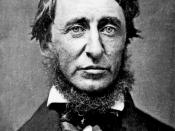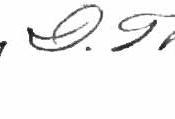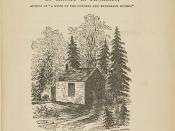The relatively obscure release of Ralph Waldo Emerson's first book, Nature, in 1836, gave few clues to the celebrity and influence which would later be enjoyed by its author. The piece was originally published anonymously but did mark the beginning of Emerson's future role of mentor, lecturer, and teacher. His scope was wide, attracting a number of admirers across Massachusetts, reaching audiences from both his literary works, as well as his numerous appearances on the university lecture circuit.
One such admirer was a young Massachusetts neighbour, Henry David Thoreau. A schoolteacher by trade, Thoreau ended up as a boarder at Emerson's home, beginning a lasting, if not frustrating, friendship. This complex relationship introduced Thoreau to the literary world, as well as to the art of lecturing, as performed by Emerson.
One such lecture, delivered by Emerson in 1837 to a Harvard audience, spoke about the past, present, and future of "The American Scholar."
Twenty-five years later, in 1862, shortly after his death, a monthly periodical published an article constructed from Thoreau's journals, entitled simply "Walking." Though very different in general subject matter, both pieces contain very similar philosophies, applicable to many areas of life and society. The application of these philosophies from one work to the other, show not a taste of plagiarism, but rather act as a testament to the influence of Ralph Waldo Emerson on the thoughts and ideas of Henry David Thoreau.
One recurring theme of this era of American literature was the idea of establishing independence for the United States from the historical ties to Europe. A cry went out for Americans to marvel in the wonders of their own backyard, rather than to look overseas to the previously dominant western European nations. Emerson was no exception to this movement and took time during his "The...


